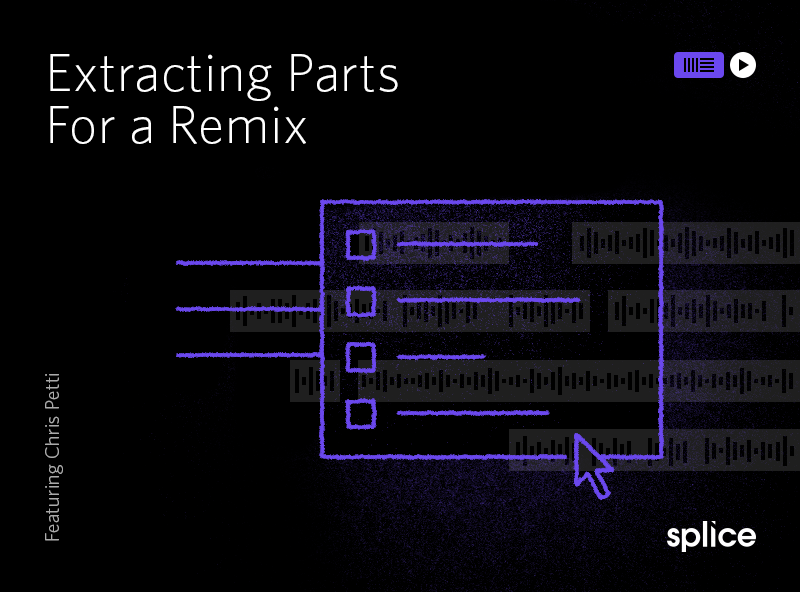Slam Academy student Maria G aka Argales recently put up a Splice project consisting of samples that she created from scratch using physical modeling synthesizers, Ableton Live and Max for Live. We took some time to chat with her about her production process and how she designed the sounds.
Splice: This is a very cool sample pack with well designed sounds. What was your inspiration behind creating this pack?
Maria: I drew inspiration for this pack from the sci-fi themed console games, and the anime movies/series I watch. I love those dynamic immersive sounds that make the player be apart of the game. The music score and its ability to blend classical and electronic vibes also resonates with me.
It was my teacher James Patrick of Slam Academy who suggested I use physical modeling synthesis for this project. He felt that this type of synthesis would be a good workflow to make composite sound design. He demonstrated over a video chat two physical modeling software instruments which were Kaivo by Madrona Labs and Chromaphone by Applied Acoustics System. I was instantly hooked on them.
I was determined to teach myself how to interface these two softwares with Ableton Live. It was pretty daunting at first as I have never tried to build a complex instrument with both series and parallel instruments, modulators, and effects. After my second instruments rack, I started to use a Max for Live instrument called Granulator by Robert Henke, in conjunction with Operator and Sampler, then pilled up lots of LFO modulators, series of Corpus (Ableton PM device), dynamic processing effects and time processing effects. I automated lots of parameters, then it started to sound very atmospheric with lots of textures. I was quite surprised by how it turned out. This was the instrument I wanted to make – the kind that when you hit a note, the sound “sings” with a lot of movements, if that makes any sense.
S: Is this your first publicly released sample pack?
M: Yes this is my first, but right now I am working on Kaivo patches project. I have created about 30 presets. I am not sure when or where it will be released, but it is my most advanced work yet.
S: Could you explain the process behind the Cars sound and Drone_5 Sound?
M: The Cars audio sample was made using two Max for Live devices: One was the Max Dopplerpan included in the Max for Live Building Tools library, and the other was a device called CircularDoppler by Robert Henke.
I wanted to simulate motion and a 3D spatial feel using these two devices. To be honest, the original idea behind the Cars samples was to create one shot versions of the Drone samples. Whether it’s the powering up or down of an engine, zap, swoosh or a flyby – any type of these sounds that is going to sting and have a quick impact. I guess the general word that is embraced in the sound design community for these kinds of words is “stinger.” So pretty much a sound that indicates motion or transition. So what I did was I grabbed some of the Drone samples that have more pronounced upper register frequencies and loaded them to Sampler, added some LFO modulation, modulated the frequency envelope, added a bit of FM modulation to give an edginess to the sounds, then I loaded the doppler effect devices.
The Drone_5 sample was created using the Argales_Drone_Machine5 instrument, one of my favorites from this project. It started out with a floor noise recording loaded up to the Granulator. Then I added 2 Corpus in series, acting as a resonator. The first resonator is using String as the object to act as the fundamental pitch. The second uses a Marimba object, tuned almost 3 octaves higher, to enhance the higher frequency. Then I added eight M4L LFO devices to modulate the granulator parameters and the two Corpus. Some other parameters are automated using my midi controller nanoKontrol2 by Korg. At the end of the instrument rack I added a distortion effect to enhance the overtones. The combination of all these effects produced a nice screaming sound. It made me feel like I was in some kind of a robot workshop!
S: What was the most challenging part of undertaking this project?
M: Fixing the instrument glitches was the biggest challenge. When combining Granulator and Max for live LFO device it crashed the DAW, produced a lot of audio drop-outs, and artifacts like clicks and crackles, so I have spend a great deal of time troubleshooting.
S: Do you have any wishes with what the community can do with your sample pack?
M: My hopes are that many people will benefit from the sample pack in their daily audio productions. Whether you are a producer, composer, songwriter, or in game audio, I hope the sample pack will inspire and bring your productions to another level.
For more info about what Slam Academy has to offer, please visit their website here.
July 20, 2016


